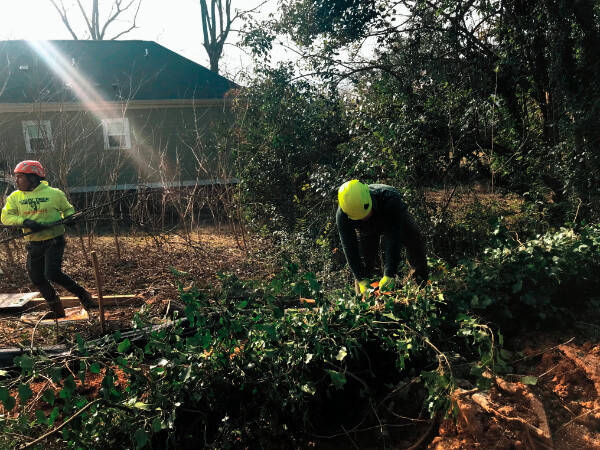Tree Trimming

Professional tree trimming costs have risen in the last few years. Tree cutting costs depend on the size and height of the trees, as explained below:
• Trimming small trees measuring up to 25 feet will be the cheapest.
• Trees between 25 feet to 50 feet costs are average.
• Large trees that grow taller than 50 feet will be more expensive than smaller trees.
These are the costs to trim a single tree. If you need to trim multiple ones, we may be able to offer a different pricing plan.
A GUIDE TO TREE TRIMMING
Do Branches Grow Back After Being Trimmed?
A cut tree branch doesn’t grow back. When you cut a branch, it triggers the tree’s healing mechanism and a scab-like layer of wood forms over it. You won’t see any growth emerging from this cut, but new growth will start around the cut which will grow into multiple branches. This is a healthy growth pattern, which indicates that your tree is thriving.
However, this only happens when you cut a tree branch in the right place. Many people cut the tree trunk instead of its branch, which affects its growth. It will take longer for the tree to recover from such a cut.
How Far Should Branches Be From My Home?
It is best to plant large trees at least 20 feet away from your house. Make sure its branches don’t come within 10 feet of your roof. If the tree branches are too close, they may cause damage to your property.
When branches are close, they act as bridges for pests. Rodents like mice, squirrels, or even raccoons can use these branches to enter your home. Large, overhanging limbs can sway sharply, brushing the structure during stormy or windy weather conditions. They may slam against your windows, roof, or other such installations. Large tree branches swaying with the wind carry a lot of force, which can cause severe damage.
Will Homeowner’s Insurance Cover Tree Trimming?
Homeowner’s insurance does not cover regular tree trimming. This task is considered to be part of your property maintenance, which is your responsibility. Your home insurance policy may cover damages to your home caused by trees or branches that have fallen during natural disasters. For example, if a tree branch from your yard crashes through a window during a severe storm, the damages caused will be covered by homeowner’s insurance.
However, cutting the tree branch after a storm because it came dangerously close to damaging your property isn’t covered.
Most insurance companies will also pay for tree removal after a disaster. If a tree falls on your house, insurance companies will cover the damages and tree removal costs. This coverage usually goes up to $1,000 per storm.
Can I Trim My Neighbor’s Tree if it Hangs Over My Yard?
By law, homeowners can trim their neighbor’s tree if some branches of it hang in their yard. However, you are only permitted to cut branches that stretch beyond the boundary line. No law allows homeowners to get into a neighbor’s property and cut their tree.
If you go or send tree care professionals to a neighbor’s property to cut a tree, you might end up compensating them. Sometimes this amount can be double or even triple the value of a tree.
Ask your neighbor about the overhanging branches and seek permission for pruning. You don’t need their permission, but getting it will help you maintain a cordial relationship with them.
Cary Tree Service RTP
Contact us today to schedule an appointment
